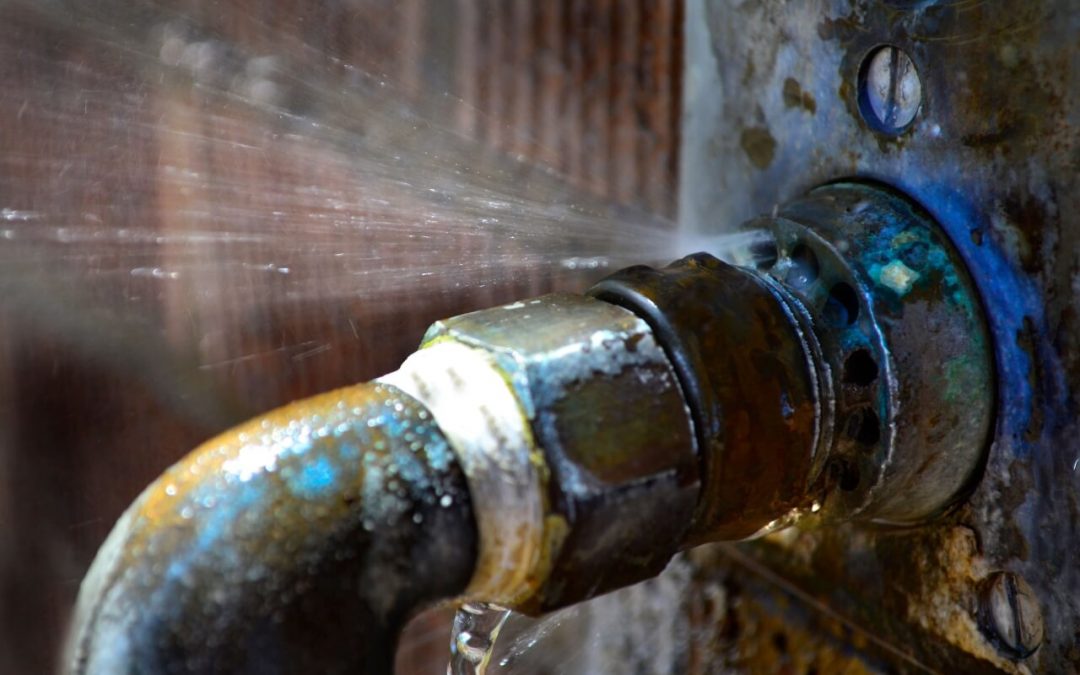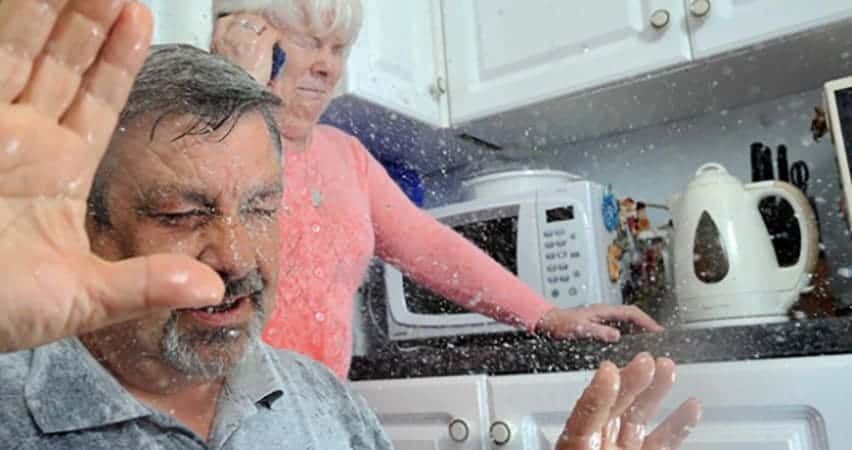Managing Plumbing Challenges in Older Homes: Tips to Fix Problems
Managing Plumbing Challenges in Older Homes: Tips to Fix Problems
Blog Article
They are making a few great pointers about Plumbing Problems In Old Homes as a whole in this content on the next paragraphs.

Older homes frequently feature appeal, character, and history, yet they can additionally bring a host of plumbing issues. Whether you're taking care of maturing pipelines, low water pressure, or leakages, recognizing exactly how to address these usual problems is essential to maintaining a safe and functional home. In this guide, we'll discover the normal pipes challenges encountered by older homes and offer practical options to keep your plumbing in leading form.
Understanding Usual Plumbing Problems
Aging Pipes
One of one of the most typical issues in older homes is maturing pipelines. Depending upon the period in which your home was built, the pipelines could be made from materials that have actually weakened over time, such as galvanized steel, cast iron, and even lead. These products can corrode, come to be weak, or develop leakages, bring about water damage and potential health hazards.
Water Top Quality Testing
Older pipes can influence the quality of your water. Conduct a water top quality test to check for contaminants such as lead, rust, or various other contaminations that may be introduced by aging pipelines.
Solutions for Usual Pipes Concerns
Changing Aging Pipelines
If your home has old, degrading pipes, take into consideration changing them with contemporary products like copper or PEX. This can be a considerable financial investment, but it will stop future concerns and boost the safety and dependability of your plumbing system.
Taking Care Of Low Tide Pressure
To take care of low tide stress, start by cleansing or replacing old fixtures and removing mineral accumulation in the pipes. If the issue lingers, it might be required to change areas of rusty pipelines.
Fixing and Changing Leaking Pipelines
For little leakages, you can make use of pipeline clamps or epoxy putty as a temporary repair. Nevertheless, it's best to replace leaking pipes completely to prevent additional damages.
Upgrading Fixtures
Upgrading old components to modern-day, water-efficient versions can boost your home's pipes efficiency and reduce water consumption. Look for fixtures with the WaterSense label for the best effectiveness.
Managing Pipeline Deterioration
If your pipelines are worn away, changing them with corrosion-resistant products like copper, PVC, or PEX is the most effective option. Routine assessments and water high quality upkeep can assist stop better deterioration.
Low Tide Pressure
If you're experiencing low water pressure, maybe as a result of natural resources, deterioration inside the pipes, or old components that are no more working successfully. This can be a major hassle, specifically in locations like showers and sinks.
Leaking Pipelines
Leakages are one more constant problem in older homes, commonly triggered by corroded or damaged pipes. Even small leakages can result in significant water damages, mold growth, and raised water expenses if not addressed without delay.
Out-of-date Fixtures
Obsolete plumbing components such as faucets, bathrooms, and showerheads not only look old yet may additionally be less reliable, susceptible to leaks, or inappropriate with modern pipes requirements.
Pipeline Rust
Deterioration is a typical trouble in older pipelines, specifically those made from galvanized steel or cast iron. Corroded pipelines can restrict water flow, create staining, and ultimately result in leakages or pipe ruptureds.
Evaluating the Problem of Your Pipes
Examining Noticeable Pipes
Begin by inspecting any type of noticeable pipelines in your home, such as those in basements, crawl spaces, or under sinks. Seek indications of deterioration, leaks, or rust, which can show underlying problems.
Looking for Leaks
Look for leaks by examining locations around faucets, bathrooms, and under sinks. You can also check your water meter prior to and after a period of no water utilize to identify covert leakages.
When to Call a Professional
While some plumbing concerns can be taken care of with DIY options, there are times when it's ideal to hire an expert. If you're taking care of major leakages, extensive corrosion, or are not sure concerning the problem of your pipelines, an accredited plumbing can give professional evaluation and repair work.
Preventive Upkeep Tips
Regular Evaluations
Routinely evaluate your plumbing system for indicators of wear and tear. Catching concerns early can avoid expensive repair services down the line.
Water Stress Law
Guarantee your water stress is within the recommended array to prevent worrying your pipelines and components. A plumbing professional can set up a stress regulatory authority if needed.
Water High Quality Maintenance
Set up water filters or softeners if your water high quality is poor. This can safeguard your pipes and fixtures from damage caused by hard water or contaminants.
Aggressive Pipe Replacement
If your home has very old pipelines, take into consideration aggressive substitute prior to major problems develop. This can save you from emergency repairs and water damages.
Verdict
Managing pipes concerns in older homes needs a combination of watchfulness, preventive upkeep, and prompt upgrades. By comprehending the typical obstacles and knowing when to look for specialist aid, you can guarantee your plumbing system remains practical and reputable for many years to come.
Common Plumbing Issues in Older Homes and How to Fix Them
Owning an older home in Australia comes with its unique charm and a set of challenges, especially when it comes to plumbing. The Sunshine Coast has many older properties that can harbour plumbing problems that aren t just inconvenient but potentially costly. Here s a look at some common plumbing issues in older homes and expert advice on how to handle them.
Outdated Piping Materials
Many older homes were built with galvanised steel, cast iron, or even lead pipes, materials that are far from ideal by today s standards. Galvanised pipes are prone to corrosion and clogging, while lead pipes pose serious health risks.
How to Fix:
Replacing old pipes is a job for a professional. Upgrading to copper or PVC piping not only enhances water quality and flow but also increases the property s safety and value. If you suspect your home has outdated materials, a licensed plumber can conduct a thorough inspection and recommend the best course of action.
Corrosion and Pipe Degradation
Over time, exposure to water and minerals can cause pipes to corrode, leading to leaks, bursts, and water contamination. Corrosion is especially common in homes over 50 years old.
How to Fix:
Regular inspections can catch early signs of corrosion. If corrosion is found, the affected section of piping often needs to be replaced. For homes with extensive corrosion, a complete plumbing overhaul might be necessary. It s crucial to consult with a plumbing expert to understand the extent of the issue.
Tree Root Intrusion
Older neighbourhoods usually have mature trees whose roots can intrude into pipe lines, causing blockages or damage. This is particularly problematic for sewer lines, where roots seek out water sources.
How to Fix:
A plumber can use a specialised camera to inspect sewer lines for root intrusion. If roots are a problem, methods like root cutting or hydro-jetting can clear the obstruction. In severe cases, part of the pipe may need replacing. Consider root barriers around the piping to prevent future issues.
Inadequate Water Pressure
Low water pressure in older homes can be due to various factors, including corroded water lines, sediment build-up in pipes, or outdated fixtures.
How to Fix:
First, check if the low pressure is isolated to one area or throughout the house. Replacing old fixtures can sometimes resolve the issue. However, if the problem is more widespread, it might be due to sediment or corrosion. Flushing the system or replacing the affected pipes usually restores normal pressure. Again, a professional assessment is advisable.
Outdated Fixtures
Older homes often feature fixtures that are not only visually dated but functionally inefficient. This includes everything from toilets and taps to showerheads and washing machine hoses.
How to Fix:
Updating these fixtures can improve both water efficiency and the aesthetic appeal of your home. Modern fixtures are designed to conserve water, which can significantly reduce your water bill and lessen your environmental impact.
Conclusion
Maintaining the plumbing in an older home requires a proactive approach. Regular checks and updates are key to preserving these beautiful properties. If you re facing plumbing issues in your older home, it s best to call on experienced professionals like Green & Gold Plumbing & Gas. With the right expertise, even the most daunting plumbing problems can be resolved, ensuring that your home s character is maintained while its functionality is enhanced.
https://gandgplumbing.com.au/common-plumbing-issues-in-older-homes-and-how-to-fix-them/

We had been shown that editorial on Common Plumbing Challenges In Old Buildings through a friend on our other web address. Enjoyed our entry? Please quickly share it. Help other people find it. I enjoy reading our article about .
Click Here Report this page